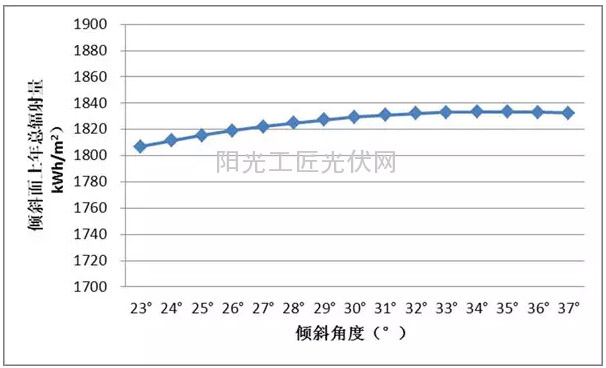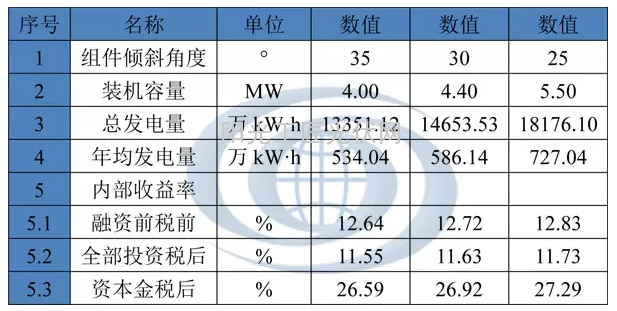In the design of photovoltaic arrays, if a fixed installation method is adopted, there will be a concept of “best dip angleâ€. The best dip angle here refers to the tilting of photovoltaic panels when the photovoltaic array is placed at a certain angle. The annual total amount of radiation on the surface reaches its maximum, but in general, the difference in the amount of radiation that is close to this optimal angle of inclination is actually very small. When the capacity of the power station is fixed, lowering the tilt angle can save land and cables and increase the wind resistance of the support. In the case of a certain land area, reducing the tilt angle can increase the installed capacity and power generation, and increase the profit. The following is a comparative analysis of a distributed power station in a certain region of Gansu Province.
The software calculates that the annual total amount of radiation on the inclined plane is the maximum when the angle is 35°. The total annual radiation changes on the 23°~37° inclined plane are shown in the figure below.

Figure 1: Total annual radiation on inclined planes at different angles
As can be seen from the above figure, the annual total radiation variation curve on the 23°~37° inclined plane is very gentle, that is to say, the total amount of total radiation on the inclined plane near the optimal inclination angle is very small.
The land area available for this project is limited. In this case, the installed capacity, power generation capacity and investment income of the three angled power stations at 35°, 30° and 25° are compared respectively. The results are as follows:

Figure 2: Installed capacity, generating capacity, and revenue of power stations at different angles
When the tilt angle of the PV module is 35°, the installed capacity of the power station is 4.0MW, the average annual power generation is 5.34 million kW, the pre-tax internal rate of return is 12.64% before financing; when the tilt angle is 30°, the installed capacity of the power station is 4.4MW, and the average annual power is The power generation amount was 5.86 million kW, and the pre-tax internal rate of return before financing was 12.72%. When the tilt angle was 25°, the installed capacity of the power station was 5.5 MW, and the average annual power generation was 5.86 million kW. The pre-tax internal rate of return was 12.83%.
It can be seen that the 25° gain is better than the optimum inclination angle of 35°. Therefore, the best is only to say that the maximum amount of radiation, for the overall benefits of the power plant may not be the best, different projects should be based on the project situation for comparison of multiple programs, and ultimately determine the installation angle of the PV array.
Led Headlamp,Head Lamp,Led Car Headlights,Led Mining Headlamp
Cangnan Younglite Electrical Co., Ltd. , https://www.younglitelight.com